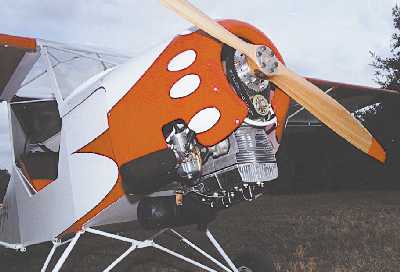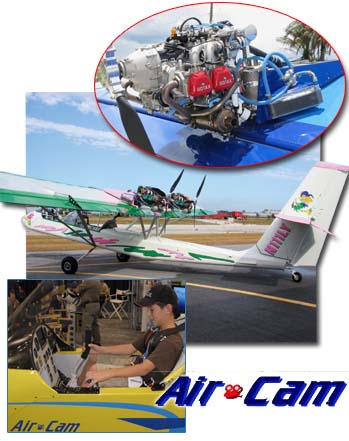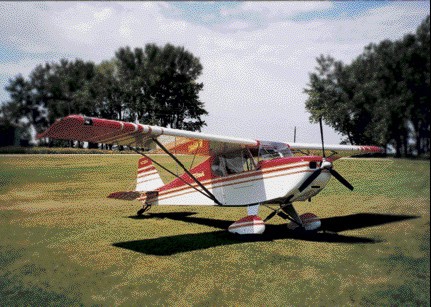
At Sun ‘n Fun 2013, big kit manufacturer Zenith Aircraft debuted their new CH 750 Cruzer. Is it truly something new under the Sun (‘n Fun)? Zenith said, “While influenced by its well-known STOL predecessors — STOL CH 701 “Sky Jeep,” CH 750, and four-seat CH 801 sport utility aircraft — the CH 750 Cruzer is an all-new design.” Company president Sebastien Heintz observed that many customers do not need off-airport capability or extreme STOL (short take-off and landing) performance so his team optimized the new design for cruise and more conventional hard-surface airports while yet retaining the popular enlarged cabin features of the STOL CH 750. Zenith‘s new Cruzer 750 sports a brand-new airfoil with a single streamlined strut. The empennage is also new with a symmetrical stabilizer and a shortened horizontal tail span. The vertical tail features a fin and rudder replacing the traditional all-moving vertical tail design of the STOL series.




 [UPDATE -- fall 2009: This article about the Kitfox Lite refers to a company now several years out of business. The new Kitfox producer sold the Kitfox Lite design to Kansas entrepreneur, James Wiebe. His company, Belite Aircraft, now produces the Belite Carbon 254 (and other variations) and has significantly changed structure with carbon fiber components to lighten the weight, assuring that it meets Part 103. For the latest info on their offerings,
[UPDATE -- fall 2009: This article about the Kitfox Lite refers to a company now several years out of business. The new Kitfox producer sold the Kitfox Lite design to Kansas entrepreneur, James Wiebe. His company, Belite Aircraft, now produces the Belite Carbon 254 (and other variations) and has significantly changed structure with carbon fiber components to lighten the weight, assuring that it meets Part 103. For the latest info on their offerings, 


































 When I was a kid, I used to say, "Just scotch it." I mean that Scotch (brand) tape could fix anything, or so my young mind thought at the time. Apparently, duct tape is the new Scotch tape, at least for aviators trying to fix tears on a fabric-covered aircraft. But,
When I was a kid, I used to say, "Just scotch it." I mean that Scotch (brand) tape could fix anything, or so my young mind thought at the time. Apparently, duct tape is the new Scotch tape, at least for aviators trying to fix tears on a fabric-covered aircraft. But,  In genuine Hollywood fashion Mythbusters went the distance, not merely patching with duct tape, but covering an entire Belite with the silver sticky stuff carefully striping the Belite vertically and horizontally (photo... yes, that's all duct tape!). After a very short flight without a turn, they found no tape had come loose; the Duct Tape Belite had achieved flight.
In genuine Hollywood fashion Mythbusters went the distance, not merely patching with duct tape, but covering an entire Belite with the silver sticky stuff carefully striping the Belite vertically and horizontally (photo... yes, that's all duct tape!). After a very short flight without a turn, they found no tape had come loose; the Duct Tape Belite had achieved flight.
 James Wiebe flew the plane during filming in June. And therein lies the real story, in my opinion. Through his duct-tape-airplane suggestion, James put light aircraft on national television. Mythbusters reaches about two million Americans, many of them younger people, with a science-is-fun message. I think it's great James got his bird on the show... heck, as the star of the show. OK, the Belite and duct tape.
Wiebe's blog noted that the Mythbusters show drove so many people to Belite's website immediately after it aired that their website crashed. Another proof that even in an age of mobile Internet devices, television still plays a major role in global culture and communication.
James Wiebe flew the plane during filming in June. And therein lies the real story, in my opinion. Through his duct-tape-airplane suggestion, James put light aircraft on national television. Mythbusters reaches about two million Americans, many of them younger people, with a science-is-fun message. I think it's great James got his bird on the show... heck, as the star of the show. OK, the Belite and duct tape.
Wiebe's blog noted that the Mythbusters show drove so many people to Belite's website immediately after it aired that their website crashed. Another proof that even in an age of mobile Internet devices, television still plays a major role in global culture and communication.


























































